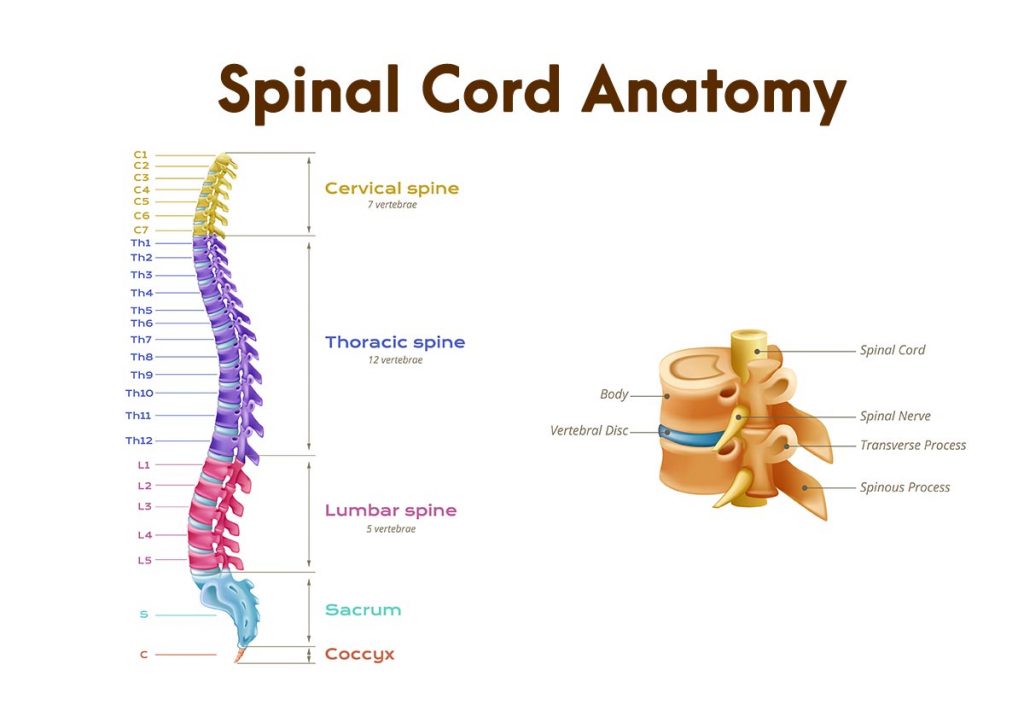
- Importance of Maintaining Mobility
- What is a Locked Back?
- What Causes Loss of Thoracic Spine Mobility?
- How to Release a Locked Back
- Taking Care of Your Spine is a Priority
The middle section of the spine is called the thoracic spine and with 12 vertebrae (bones), it is the longest spinal section. It extends from the lower section of the neck to right below the ribs. Functionally rigid, thoracic spine mobility is sometimes limited due to things like sitting for long periods at your desk. Keeping the thoracic spine as mobile as possible is important to your body’s movement and to avoiding the development of other muscle and joint issues as the body compensates for the lack of spinal mobility.

Importance of Maintaining Mobility in the Thoracic Spine
- Helps with torso rotation
- Supports the abdomen and chest
- Contributes to rib cage stabilization as a point of attachment for rib bones
- Provides a point of attachment for some muscles
- Helps protect the heart and lungs
- Protects the spinal cord
- Helps support breathing
The thoracic spine motions include extension, flexion, side bending and rotation. However, the thoracic spine does not have full mobility because its main purpose is to provide stability. The cervical and lumbar spinal sections have more mobility.
What is a Locked Back?
The thoracic spine can experience some of the same issues as the other sections of the spine. They include disc herniation, injury, arthritis and other diseases. Often though, the issue is loss of mobility because of things like lifestyle and posture.
The back locks up, making movement stiff and sometimes painful. In fact, a locked back can cause shoulder and neck muscle and joint pain because the spine and torso cannot move normally. This leads to a tendency to overcompensate the spine by adjusting movement in these other areas and making them work harder.
A locked back usually refers to the loss of flexion in the thoracic spine. Flexion is the bending movement that decreases an angle between body parts, in this case, the bones in the spinal column. The extension is the opposite movement of flexion. Lateral flexion in the spine refers to the bending movement of the body left or right. Rotation of the vertebral column is the twisting motion in which one bone rotates in relation to a different bone. The extension is the opposite movement of flexion.
The thoracic spine is designed to have limited mobility so that it is always protecting vital organs but allows for chest movement during breathing. It also prevents flexion on the lungs and heart. The back has ligaments connecting the ribs and muscles arranged in layers, including a deep layer attached to the spine.
When the back locks up, the muscles and ligaments are stiff and limit movement of the part of the spine that is already naturally limited in mobility.

What Causes Loss of Thoracic Spine Mobility?
Some of the reasons people lose thoracic spine mobility include the following.
- Sitting too long in one position with the back and neck rounded and arms extended, like at a desk
- Doing movements that require frequent forward bending which rounds the thoracic spine
- Overuse of deep muscles that limit rotation, flexion and extension
When you have a decreased ability to rotate the body and have increased thoracic spine rounding (called kyphosis), you can experience a variety of symptoms. Most are related to how your body compensates for the locked back
- Difficulty rotating the torso and bending forward, back and side-to-side
- Pain in the muscles and joints
- Forward head position leads to headaches
- Rounded shoulders decrease shoulder blade movement which can lead to pinching in the shoulder joint when the arms are lifted
- Increased arch develops in the lower back leading to low back pain
- Potential for increased injury in the compensating joints and muscles
How to Release a Locked Back?

There are thoracic spine exercises and stretches you can do to loosen up your back. They include exercises like the following.
1. Cat cow pose
On your hands and knees, curve your torso down and then curve the back up.
2. Gym ball stretch
Fully stretch on your back on a gym ball.
3. Thread the Needle
While on your hands and knees, take one arm and stretch it under the other arm.
4. Spinal rotations
Twist at the waist from side to side.
5. Rotation with a lunge
Get on your hands and knees and then place one bent leg in front so your foot is flat on the ground while the other leg remains on the knee; raise the arm that is on the same side as the bent leg towards the sky and then swing it back behind the arm on the ground and repeat.
6. Mid-back mobility stretch
Lying on your side, prop one leg on a foam roller at 90 degrees while keeping the other leg straight, and rotate one arm from one side to another.
Doing yoga is a good way to learn a variety of thoracic spine stretches while increasing flexibility in the whole body. The exercises specifically for the thoracic spine focus on stability and mobility in the thoracic spine. There are also thoracic back pain exercises like kneeling rotations and the rolled towel extension.
Taking Care of Your Spine is a Priority
You can learn how to self adjust the thoracic spine, but it is important to learn how to correctly do the exercises. Your pain management doctor can suggest the best exercises, and a physical therapist can demonstrate the correct form. Spinal mobility exercises can be done at home and are not difficult to do. The key is to consistently do the exercises and not quit too soon.
Sources
- https://www.ncbi.nlm.nih.gov/books/NBK459153/
- https://www.sciencedirect.com/science/article/abs/pii/S1466853X17306879?via%3Dihub
- https://open.oregonstate.education/aandp/chapter/9-5-types-of-body-movements/
- https://www.physio-pedia.com/Thoracic_Anatomy
